TDI is located is located in West Union, Ohio which is approximately a two-hour drive South for me from the Dayton Ohio area. I feel very fortunate to live in very close proximity to such well regarded training resource – TDI has been training police, military, security, and civilian personnel for over 15 years. The course I chose to take was their Defensive Knife course – a popular course at TDI typically offered twice a year.
Greg Ellifritz was the primary instructor during the two-day training course, which by most measures would be considered an introductory course in defensive knife techniques (click here for a course description). I’ll say up front that I couldn’t have been more impressed with the instruction from Greg Ellifritz. Greg has trained with most of the leading firearms and edged weapons instructors in the country, and boils that training down to a course which teaches the most practical techniques for both using a knife (fixed or folding) to defend yourself, as well as techniques for defending against a knife-wielding attacker. Greg’s instruction was supplemented by several other TDI staff members, which made up a “who’s who” of some of top names in the field of tactical defense training including TDI President and Chief Instructor John Benner, David (not the singer) Bowie, TDI Instructor and owner of Bowie Tactical Concepts, as well as John Motil and Forrest Sonewald who are both long-time TDI instructors with distinguished careers in military/law enforcement settings.
I’d like to be able to tell you that I was the star student in this class, but it would be more honest to say that I was a slow-learner with less natural aptitude than many. I brought a couple of very nice knives to the class, and at one or two points during the training I’m pretty sure my knives were actually embarrassed to be held by me. I kept reminding myself (and my knives…) that I didn’t take the class because I was already an expert in the use of a knife. Despite the fact that we had a larger than normal class (18 students), there was no lack of personalized instruction. Forrest Sonewald in particular spent quite a bit of time patiently reviewing techniques with me and correcting my (many) mistakes. By the end of the course, there was no question in my mind that I was FAR more prepared to both use and defend against a knife. But I came away with two very clear key points from the training:
1. If I have to use my knife to defend myself, it’s a very bad day. I came into the course wanting to supplement my training in my primary self-defense weapon of choice – a firearm. If circumstances prevent me from using my primary self-defense weapon of choice, then I’ll fall back to whatever knife I have on me, perhaps using the knife to either secure or get to my firearm. While I feel more confident in the use of a knife having taken the course, a knife isn’t going to replace a gun in my system of defense. For me, a knife is a secondary weapon. Even if I do everything right defending myself with a knife, there’s a very strong bio-hazard risk associated with exposure to your attackers blood. Statistics seem to point to the criminal population being at much higher risk for carrying nasty pathogens which can be transmitted via the blood than the law-abiding citizen segment. While this risk is certainly not negated when using a firearm (particularly in close proximity), the risk of exposure is all but assured when using a knife.
2. If I’m ever in the position of being without my firearm and have to engage another person armed with a knife, it’s a very, very bad day. During the second day of Defensive Knife class, we learned several very effective techniques to help defend against an attacker armed with a knife. Before taking the class, someone armed with a knife probably could have carved me up like a Thanksgiving turkey. Now I feel like I’ve got a pretty good shot at escaping such an encounter with my life. But there is no technique that is 100% effective in all situations – if an attacker comes at me with a knife, there’s a chance I’m going to get cut. All I can hope to do is make the best out of a bad situation.
You don’t have to be a concealed carry firearms owner to take the course, but much of the course focuses on techniques for using a knife to aid in weapons retention and control if you’re carrying a firearm. It seemed to me that most of the students in the course were, like myself, CCW permit holders.
The Defensive Knife course from TDI is extremely thorough, and some time is even spent on knife sharpening. I was surprised and delighted to learn that Greg Ellifritz both uses and recommends the Spyderco Sharpmaker for knife sharpening (click here for my review of the Spyderco Sharpmaker).
Another interesting segment of the course came at the end of the second day. TDI secured some deer carcasses (spoiled and not usable for any other purpose) for us to practice our techniques on. The purpose of the exercise is to provide a very realistic simulation of what it’s like to actually stab or cut into flesh. One of the deer carcasses was also dressed with clothing so that students could how cloths change the cutting dynamics. Here’s a video I recorded during this segment of the course:
Despite my not being the best student in the course, I was (generously) awarded a certificate of completion…perhaps based on the sheer entertainment value of my attendance alone:
I hope you enjoyed this article, because my experience at the Defensive Knife course at TDI only further reinforced my desire to take additional training from TDI. I’ve signed up for at least 5 more courses in 2012, and plan on doing articles for each one.

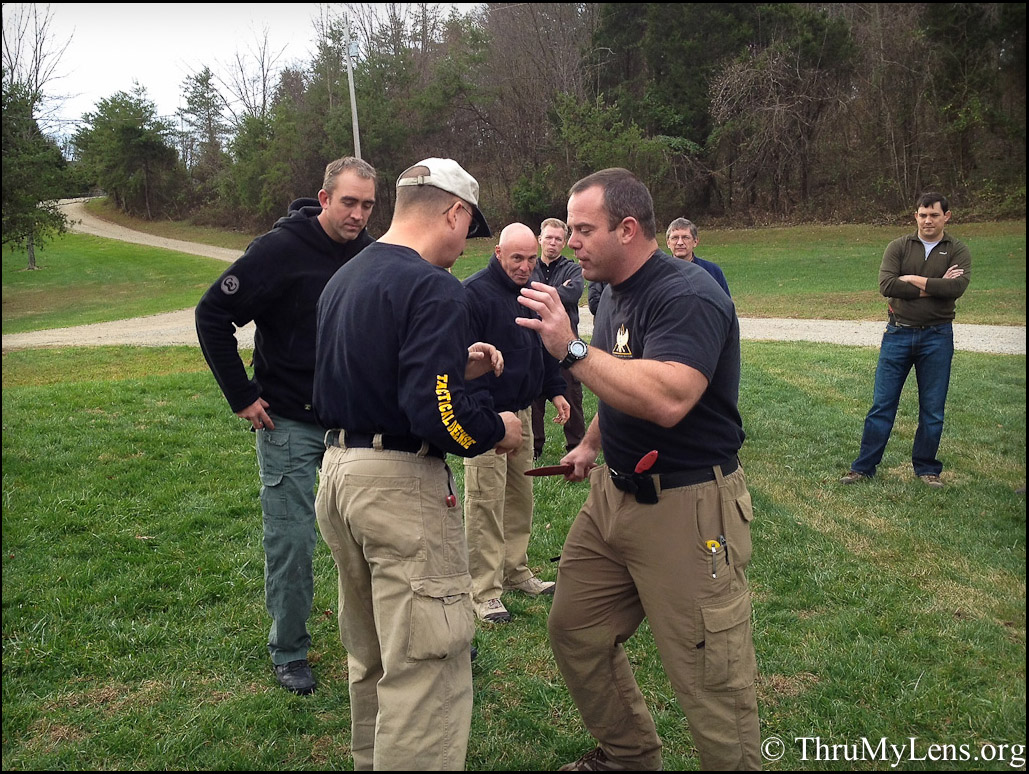
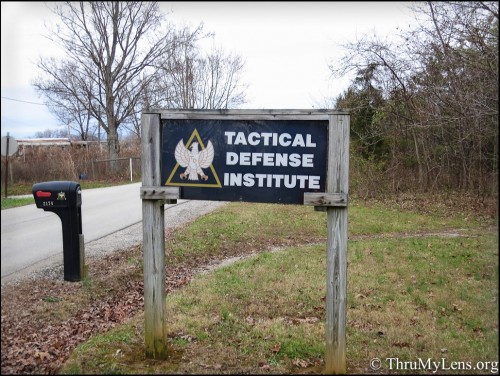
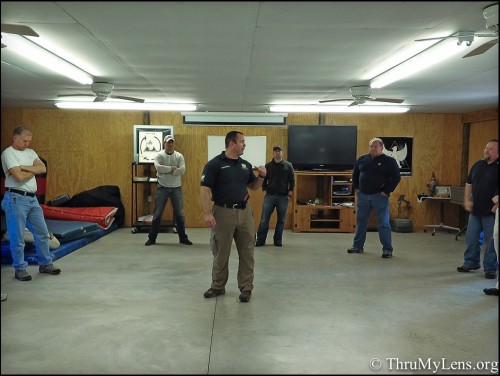
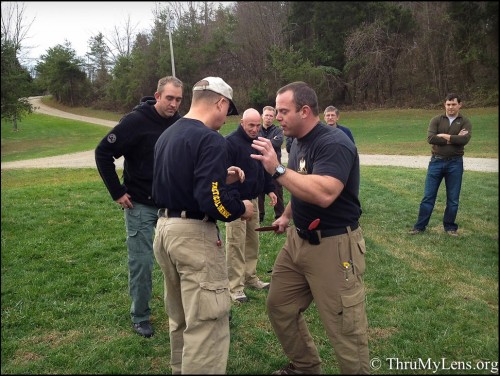
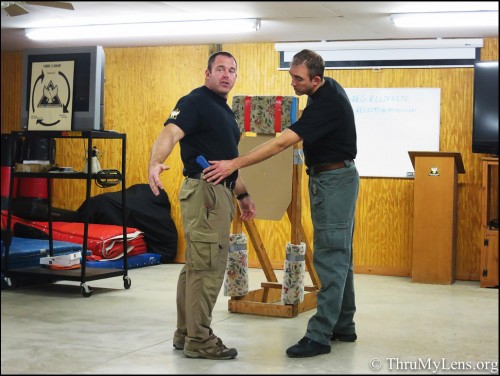
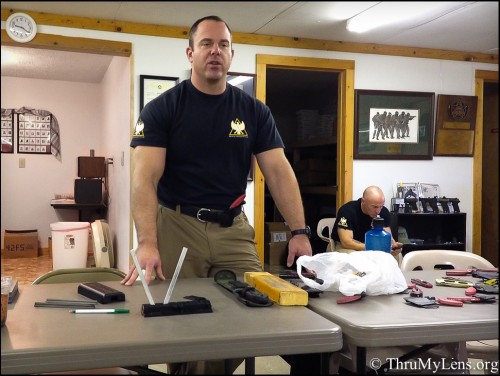
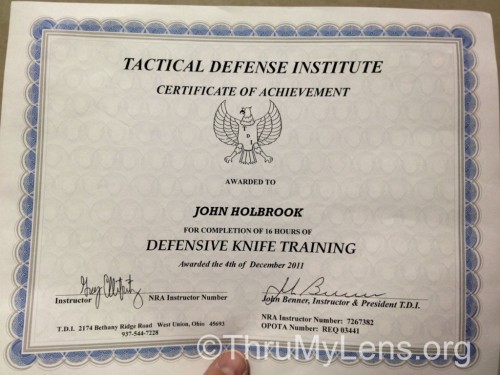
Nice review. The folks at TDI are good people! Glad you enjoyed the course.